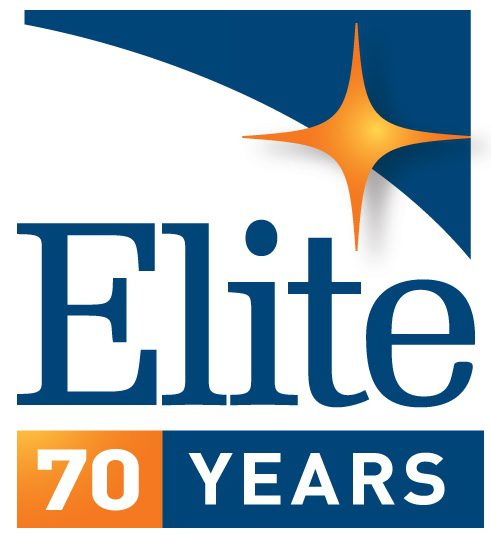March 29, 2022
Testing what’s under the hood
A whole vehicle – car, truck, tractor, whatever – can be EMC tested. As described in Elite’s previous blog on whole-vehicle EMC testing, electric vehicles (EVs) can be tested for radiofrequency (RF) emissions and immunity in a drive-in test chamber. Requirements set by the manufacturers and those set by regulatory bodies are used to determine if an assembled vehicle meets the specs for electromagnetic compatibility (EMC).
But vehicles are complex machines full of widely varying systems and components, and each of those is complex. Systems for battery and charging control, motor-drive, and driver interface, among others, are often provided by subcontractors to the vehicle’s original equipment manufacturer (OEM). Each of those systems has its own requirements they need to meet.
On-Board Charging Systems
The International Electrotechnical Commission (IEC) has defined standards that include EMC. It’s clear that minimizing interference among the vehicle’s electronics is needed to assure safe operation. But also important are RF emissions and immunity outside the vehicle. The electronics inside produce effects on the outside.

Running EMC tests on internal systems outside the vehicle requires fixtures and support that simulate operating conditions. The onboard charger is an AC-to-DC converter in the vehicle that connects with an external cable to an AC mains outlet. There are two charging levels used by on-board chargers:
Level 1 — The standard 120-volt AC mains outlet used in North America. Level 1 does not require a special installation but charges more slowly.
Level 2 — The 240-volt mains outlet, is typically found in dedicated charging stations and as separate installations in residential buildings. Level 2 charges faster, due to the higher voltage and typically higher current capacity.
The high-speed switching inside the AC-to-DC converter generates significant electromagnetic interference (EMI), owing to the high currents required. More current means more energy, which translates into the challenge of more EMI.
The Applicable Standards
Vehicle OEMs usually have very specific EMC requirements of their own that are based on industry practices. The broad vehicle EMC requirements are set up in Regulation 10 of the United Nations Economic Commission for Europe (UNECE Reg 10), which defines vehicle EMC requirements. Part of that covers on-board charging systems, and Regulation 10 refers to two standards for direction on testing:
• IEC 61000-6-1, “Generic standards – Immunity standard for residential, commercial and light-industrial environments”
• IEC 61000-6-3, “Generic standards – Emission standard for equipment in residential environments”
Immunity
IEC 61000-6-1 specifies that the equipment under test (EUT) “continue to operate as intended during and after the test,” which simply means there are no system failures when the EUT is subjected to the specified RF field. Test procedures for each configuration of the charging system are referred to standards relating to specific phenomena:
- Electrostatic Discharge (ESD): IEC 61000-4-2
- RF fields: IEC 61000-4-3
- Electrical fast transients: IEC 61000-4-4
- Surge: IEC 61000-4-5
- Conducted Disturbances: IEC 61000-4-6
- Magnetic fields: IEC 61000-4-8
- And more
These are fundamental standards spelling out the steps to be followed for each of these immunity aspects. The test severity levels that specify voltage levels and failure-criteria specifics are set by the manufacturer. Those details are given in the test plan agreed upon between the manufacturer and the test lab.
As the list above suggests, immunity covers more than just radio noise. Effects of surges, ESD, and transients all must be taken into consideration. The increasing complexity of vehicle control systems makes careful testing, not an option, but an imperative.
Emissions
IEC 61000-6-3 specifies that RF emissions (both radiated and conducted) from the EUT must be limited to acceptable levels. As with the immunity requirement, applicable basic standards are referenced:
- CISPR 16-1 for test site and equipment
- CISPR 16-2 for test methods
For testing in a semi-anechoic chamber, IEC 61000-6-3 sets these radiated emission limits:
| Frequency Range | Limit @10m |
| 30-230 MHz | 30 dB(µV/m) quasi-peak |
| 230-1000 MHz | 37 dB(µV/m) quasi-peak |
| Frequency Range | Limit @3m |
| 1000-3000 MHz | 70 dB(µV/m) peak,50 dB(µV/m) avg |
| 3000-6000 MHz | 74 dB(µV/m) peak,54 dB(µV/m) avg |
The standard allows measurements to be done at 3 m, 5 m, 10 m, or 30 m. Adjustments in the limits for different antenna distances are made based on the CISPR measurement standards. Development testing of prototype devices are done to identify emission sources. Final verification and compliance testing is done to confirm that the assembled system is within the emission limits set in the standard.
Final Product Requirements
EMC testing is fundamental to all electronic devices and is especially so in EV systems. The higher energy levels in EV charging systems increase the risk of disruptive RF interference, which can have a direct effect on vehicle safety. These devices and the systems they comprise need to demonstrate both minimal RF emissions and immunity to external interference threats.
The goal in both cases is to minimize risk to an electric vehicle’s highly integrated electronics, as well as to other nearby electronic devices.
EMC testing is part of a suite of tests EV manufacturers and their suppliers need to be aware of. Contact the experts at Elite to determine which tests apply to your device, system, or vehicle. The future is now for EVs, and Elite is there to offer the testing support you need.
